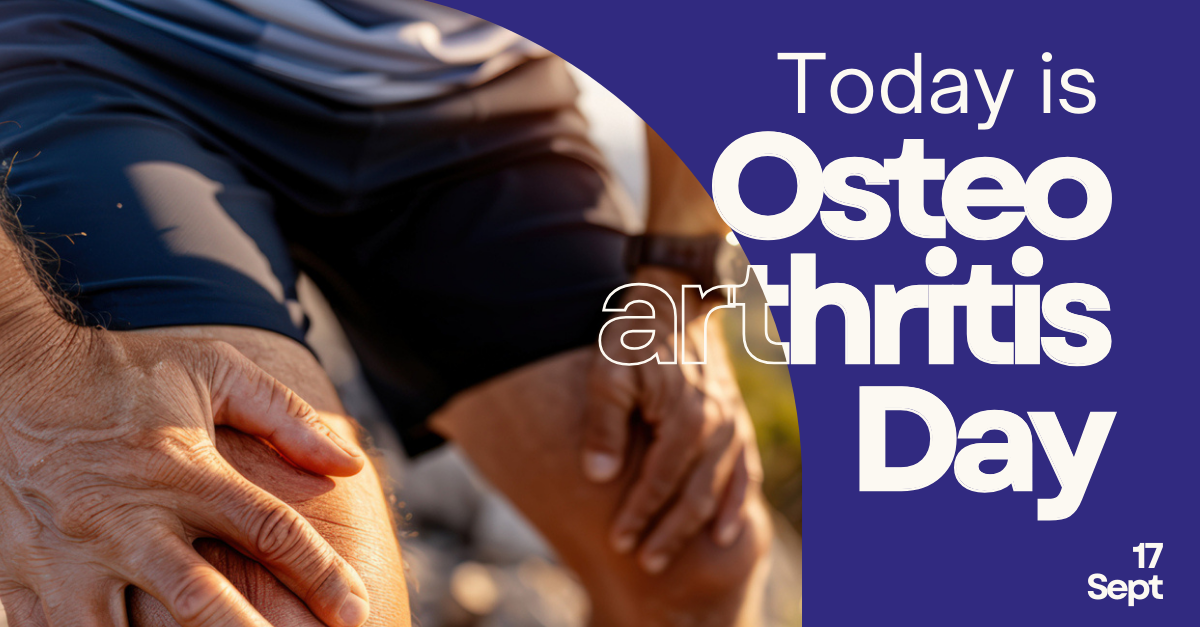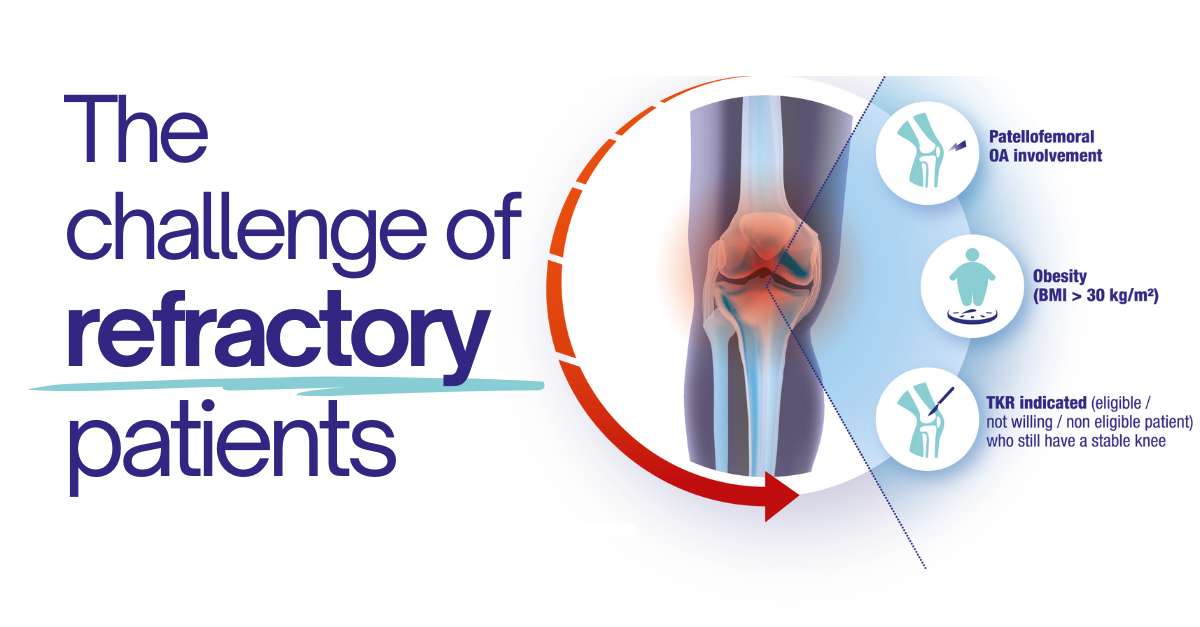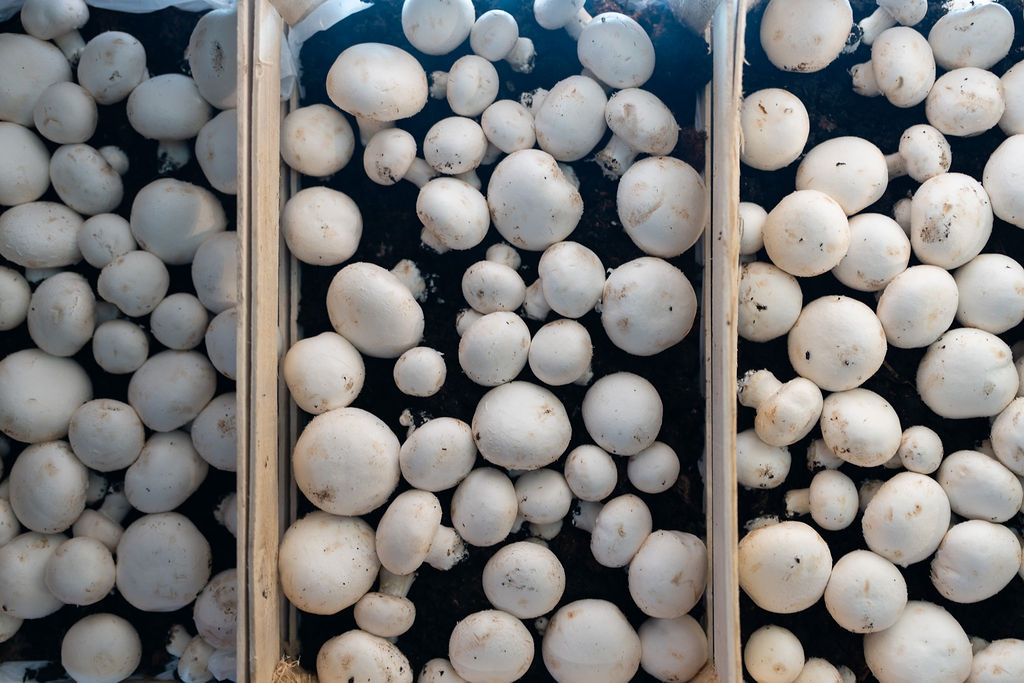Refractory Patients: Knee osteoarthritis and its complex profiles

Osteoarthritis is one of the leading causes of pain and loss of mobility, affecting nearly 650 million people worldwide, of which around 365 million live with knee osteoarthritis. In Belgium, nearly 19% of the adult population is affected. Each year, knee osteoarthritis accounts for more than 27,000 knee replacements, with a growing proportion performed in patients under 65 years of age.
Its prevalence has more than doubled in the last 30 years, driven by population aging and the rise in overweight and obesity.
Beyond these well-known factors, a clinical reality remains under-recognized: refractory patients. In these individuals, conservative treatments fail to restore a satisfactory quality of life, while surgery – considered the last resort – is not immediately desirable or feasible. These patients include young, active individuals with post-traumatic sequelae, those with femoro-patellar disease, or patients with complex metabolic components, all of whom present increasing challenges for clinicians.
Knee osteoarthritis can no longer be reduced to a matter of age or “wear and tear.” It represents a major public health issue, with a growing socio-economic burden. Faced with this reality, research and innovation must continue to explore new alternatives to meet unmet needs and offer sustainable solutions to patients.
Knee Osteoarthritis: A degenerative disease with many faces
Knee osteoarthritis is not simply a matter of age-related cartilage “wear.” It is a chronic degenerative disease that affects the entire joint, resulting from multiple combined mechanisms: progressive cartilage breakdown, variable inflammation of the synovial membrane, subchondral bone remodeling, and changes in the cellular environment within the joint.
It often progresses in flares: painful episodes, stiffness, and swelling alternate with calmer phases. But in the background, a vicious cycle sets in: cartilage degradation releases debris that fuels inflammation; inflammation generates free radicals, inflammatory mediators, and enzymes that accelerate tissue damage. Mechanical stress can further overload the joint, worsening the damage.
Knee osteoarthritis may involve a single compartment (medial, lateral, or femoro-patellar) or the entire joint (tricompartmental disease). Its progression depends on a wide range of intrinsic and extrinsic factors: age, body weight, genetic predisposition, history of joint trauma, posture, occupational and sports activities, as well as metabolic status and overall health. This diversity highlights the importance of an individualized approach that considers the specific profile of each patient.
Conservative Therapies: the foundation of management
Belgian and international medical guidelines agree on the importance of non-surgical strategies:
- Adapted physical activity: walking, cycling, swimming, muscle strengthening
- Functional rehabilitation: physiotherapy, mobility, and stability exercises
- Lifestyle and dietary measures: weight loss, daily activity adaptation
Movement remains a cornerstone of therapy. Strengthening, patient education, and physiotherapy often help maintain joint function. These approaches are validated and recommended in all forms of osteoarthritis, including advanced stages. They help reduce pain, slow progression, and delay – or even avoid – surgery.
The challenge of refractory patients
For some patients, the response to conventional treatments (corticosteroids, hyaluronic acid, PRP) may be limited. These particular clinical situations, while documented in the literature, remain underrepresented in clinical trials and often require individualized therapeutic strategies.
They include:
- Specific patellofemoral
- Patients with overweight or obesity, where mechanical stress combines with a complex chronic inflammatory state
- TKR indicated (eligible / not willing / non eligible patient) who still have a stable knee

What options remain when pain persists despite all efforts? When standard treatments cannot restore mobility, and surgery is not desirable or feasible in the short term?
Research is now focusing on better characterizing these profiles and developing innovative approaches. Among them, injectable biomaterials that act both on joint lubrication and on the oxidative and inflammatory environment are emerging as promising solutions.
A belgian innovation for refractory patients: from Button Mushroom to China
One example of this innovative approach is the use of KiOmedine® CM-Chitosan injections, a biopolymer derived from the button mushroom and developed by Belgian company KiOmed Pharma.
This Belgian innovation recently achieved a historic milestone: regulatory acceptance in China, a rare achievement for a European biotech in a country with particularly stringent standards.
The button mushroom: more than just food
From the button mushroom, KiOmed Pharma scientists extract chitosan, a natural molecule that is then transformed in the laboratory into carboxymethyl-chitosan – an ultra-pure version able to act specifically in the complex joint environment of refractory patients.
Its benefits include:
- Improved joint lubrication and effective relief from pain and stiffness
- Durable anti-inflammatory activity through macrophage reprogramming and oxidative stress control, breaking the vicious inflammatory cycle of osteoarthritis
- Demonstrated clinical benefits even in refractory cases, with sustained pain and function improvements for several months after a single injection: pain relief within the first week, maintained up to 12 months, and in some cases postponement of knee replacement surgery

From standardization to personalization
This approach illustrates the necessary shift in osteoarthritis management: moving from a standardized vision to a personalized, multidisciplinary approach that recognizes the diversity of profiles and mechanisms at play.
For refractory patients, these innovations may help to:
- Maintain professional or sporting activity longer
- Preserve autonomy and quality of life
- Postpone surgery when not immediately desirable
- Reduce pressure on healthcare systems by providing alternatives to traditional care pathways
World Osteoarthritis Day is a reminder that this disease extends far beyond the framework of aging. It affects diverse profiles – including younger, active patients with specific pathophysiological mechanisms – for whom preserving or restoring movement is a central therapeutic goal that requires adapted strategies.
The acceptance of KiOmed Pharma’s innovation in China reflects international recognition of a Belgian approach dedicated to complex clinical situations in osteoarthritis, as a complement to established protocols.
In the context of European healthcare budgetary constraints, such therapeutic innovations can contribute to optimizing care pathways.
Patient associations
Knee osteoarthritis can affect mobility, daily comfort, and confidence in physical activities. In addition to medical care, several independent organizations provide valuable information, practical advice, and peer support opportunities for individuals living with this condition.
- www.fondationarthrose.org (BE)
- www.aflar.org (FR)

